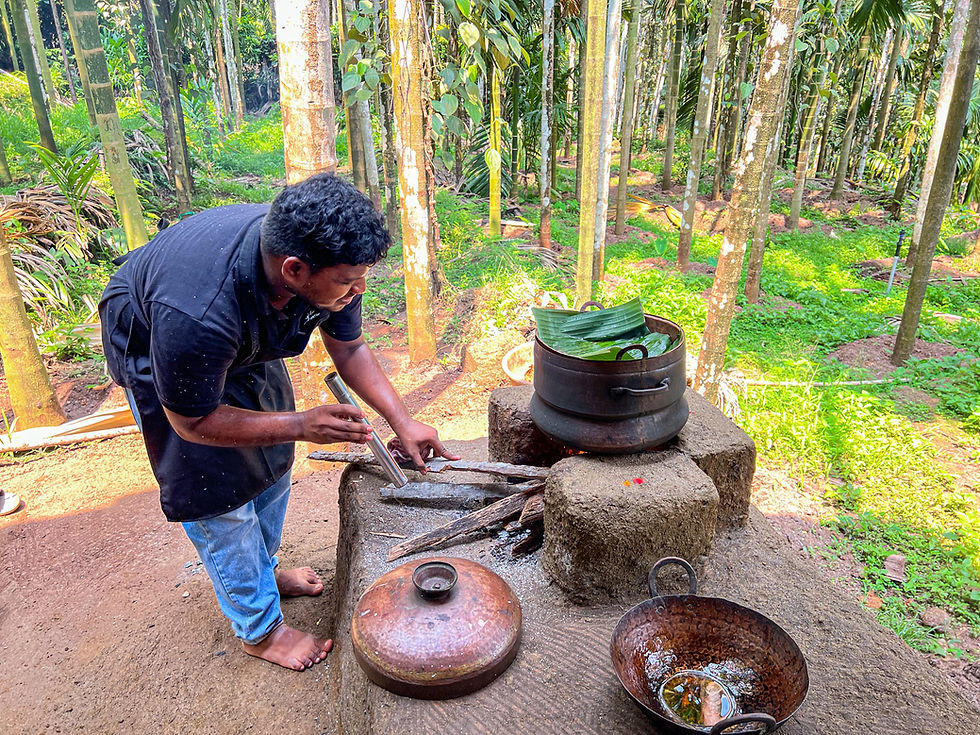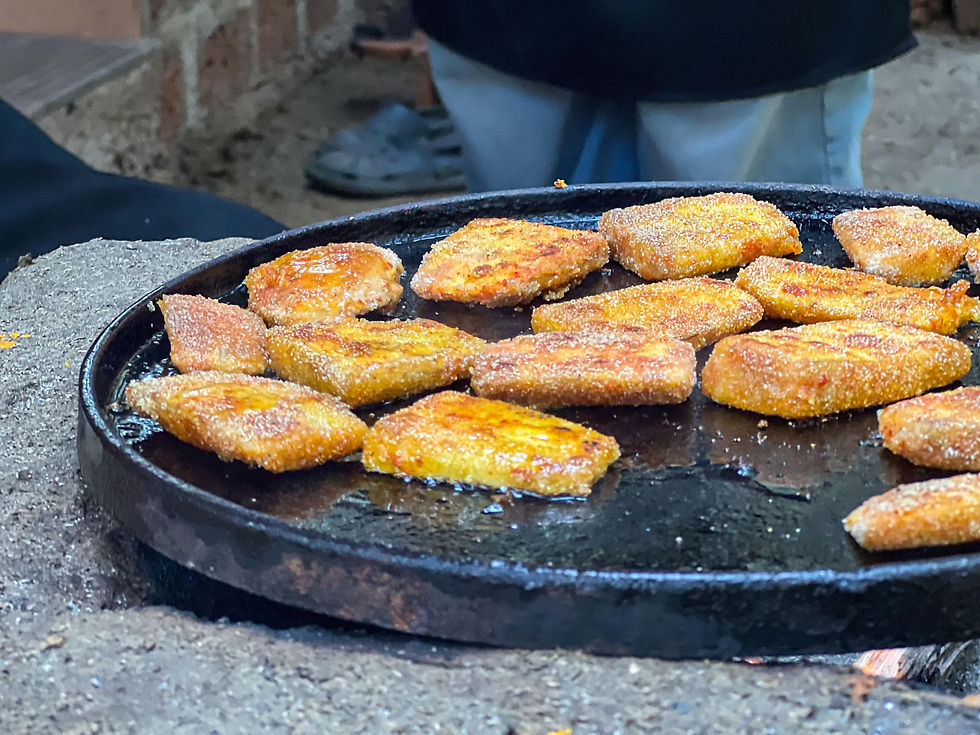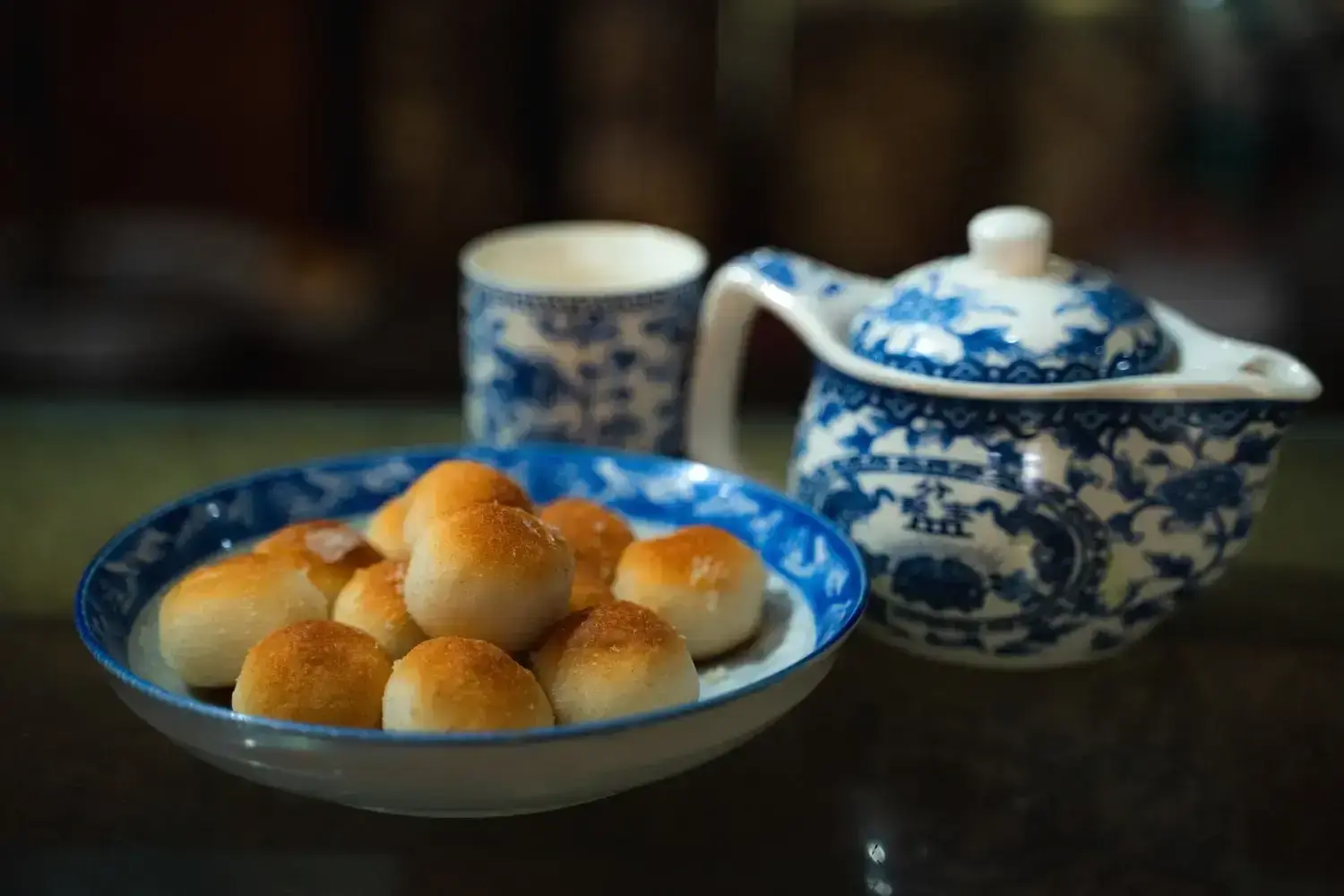What If the Real Taste of Goa Lies Beyond the Beach Shacks?
- Gargi Guha
- Jun 24
- 4 min read
Updated: Jul 11

Taking a break in South Goa’s lush hinterland is a great chance to sample some of the best produce and delicious local dishes, walk in the thickets, and have a truly bucolic experience.
Imagine spending hours walking through the orchards, foraging for your lunch, lighting a fire, and cooking with treats to sample.
So, where should you go if you want your next trip in Goa to revolve around eating with locals in a truly beautiful, natural setting? That's the question we're answering here.
But first the journey, and only then the destination.
The Winding Journey Through Lush Greens
Driving down for an hour from Margao, we first cross Quepem, then continue to Tilamol, and finally proceed to Rivona. Picture stretches of emerald greens on both sides of gently winding roads, cattle grazing lazily, and a slowness that begs you to breathe deeply and let go of every shred of worry. This is the Goa that asks to be experienced from a place of sweet, slow surrender. Far from the crowded, touristy spots, it is possibly the best way to experience the luxuriant hinterlands that South Goa has to offer.
Rivona itself is far enough to get to from basically anywhere else in Goa, and so, visiting it feels as though you’re travelling to a magical, faraway place. Some of the most treasured natural and cultural gems have deep roots here. Cradled within the Western Ghats, Rivona is blessed with cascading waterfalls and gurgling mountain springs, making it a relatively secluded hideaway. The natural splendour of these waterfalls grows manifold during the monsoon season, which typically spans from June to September. During this time, the seasonal rains add to the swelling water bodies and impart a vibrant green brushstroke to the lush surroundings.
Rivona or Rishivan, as it was known earlier, is also known for the Rivona Caves, also referred to as the Buddhist caves, as well as the Pandava caves. Legend has it that these caves were used by either the Pandavas, from the Mahabharat epic, or Buddhist monks during the 7th century. Though quite deserted now, it is worth a visit, if only to view the fascinating petroglyphs or rock carvings on the bank of the river.

Arrival At The Farm
Upon arrival at the plantation, we are greeted by the host family and ushered into their kulaghar, or an ancestral kitchen and homestead, right in the middle of the greenery. They have been hosting guests for the last few years, and their warmth quickly makes guests feel welcome on their home turf.
Cool lemonade, perfumed with their home-grown spices, is the perfect way to start.
Then, a local dish, quite often a sattva, a delicious pudding made of ragi, coconut milk, turmeric leaf and jaggery would follow. The dish is both palatable, as it was often given to little children, and also filling. Possibly, just the fuel we need before we grab some knives and baskets to go foraging into the thickets and return before lunch.
The Plantation - Organic, Planned, and Carefully Tended
It is easy to see that the plantation is a carefully thought-through estate, where fertile ancestral land has been carefully nurtured with the help of modern-day infrastructural changes and a little strategic thinking.
The entire farm, spanning 6 to 7 acres, is protected with recurring steps, designed to conserve the alluvial soil from washing away. Sprinklers throughout its expanses are turned on in the early morning for a good 4 hours to ensure the vegetation is well irrigated.
No wonder the foliage is thick and luxuriant. There are about 4000 areca nut trees, 200 coconut palms, and about 25 percent of the areca nut trees have pepper trees growing on them. Nutmeg trees are another feature, and the fruit yields are fully used. The bottled nutmeg jam is possibly the most unique product here, the only one in the country, perfect for gifting. They produce around 400 to 500 kg of jam every year from the nutmeg apple, which is usually discarded, after extracting the mace strands and nutmeg kernel inside.
At the heart of the plantation is a bubbling spring that flows straight from the Sahyadri ranges. The water is cool, pure, and fresh, lending much of its nutrients to the deliciousness of the food. After collecting this spring water in an urn, it is now time to cut up some banana and jackfruit leaves, gather them in the basket, and head back. Massive jackfruits hang on the trees, looking precariously voluminous. Wood apples, pepper, bananas, lemons, and other fruits weigh down the branches too.
The culinary experience
Back at the kulaghar, everything is washed, laid out, and cut. The family’s prized spice-box sits at the centre of the table, and once the lid is opened, the spices present themselves. Cumin, coriander, pepper, and a fiery red chilly powder, which adds not just hotness, but also a depth of flavour. Raw bananas are sliced for the banana kappa, a sumptuous mock fish, which is slowly shallow-fried on the clay stove that makes it a truly simple affair, reminiscent of yesteryears.

The menu usually changes, but involves steaming or cooking in the plucked banana and jackfruit leaves. The beloved Goan donne is a sweet treat that is a parcel of goodness. A delicious filling of jaggery, coconut, nuts, and spices is packed into a rice flour covering, lovingly folded into jackfruit leaf pocket,s and steamed.
The meal is prepared by the host family, and sitting down surrounded by the dense foliage around, with gentle storytelling and the enveloping aromas of the spices from the dishes, is in itself a surreal experience. The array of dishes is a kaleidoscope of flavours.
The kulaghar cuisine of Rivona leans heavily on traditional Goan food, with a focus on seafood, rice, and coconut-based dishes. Spices are used with a gentle hand, making the food seem fragrant and delectable. Dishes like kismur, banana flower, prawns in a coconut gravy, chicken xacuti etc can be expected, all to be washed down with a lightly spiced kokum juice, garnished with fresh coriander.
Cooking with the locals is a unique experience that allows one to look through a curated lens, into South Goa’s traditional homestead living.
Off the grid and totally away from the to-do lists, this experience is to be richly savoured at one’s own slow pace.









Comments